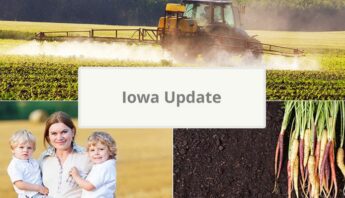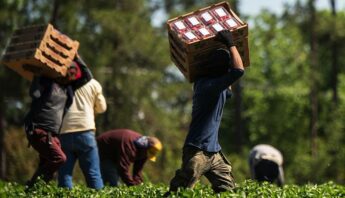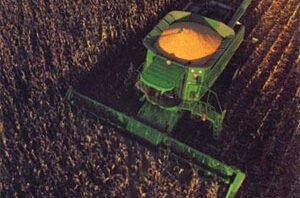Earlier this month I had the opportunity to present a workshop on pesticides at the National Environmental Health Association’s Region 4 gathering in Waterloo, Iowa. I focused in on the public health problems caused by heavy pesticide use in Iowa — and the need to shift to safer alternatives.
I also highlighted the urgency of supporting solutions, and specifically the importance of PAN’s work with farmer groups in the state to put policies in place that protect farmers and rural families from pesticide exposures.
“When you see something, say something”
The mission of the National Environmental Health Association is “to advance the environmental health and protection professional for the purpose of providing a healthful environment for all.” Region 4 covers six states in the Midwest: Iowa, Minnesota, Nebraska, North Dakota, South Dakota and Wisconsin.
The speaker in the general session was an FBI Special Agent, who updated this audience of health professionals on what they ought to know about terrorism’s potential impact on communities. It was a powerful presentation, and somewhat overwhelming compared to other topics discussed at the conference. His main takeaway advice: “when you see something, say something.”
So I took this message into my workshop, making the case to a group of about 40 environmental health professionals that we’re seeing serious health problems linked to pesticides, and it’s time for us to speak up about this problem in the Midwest.
In my presentation, I elaborated on these four key realities about pesticides in Iowa:
- Pesticide use is widespread, and driven by current monoculture cropping systems;
- Rural Iowans are at highest risk of pesticide exposure;
- More protective public health policies are urgently needed; and
- Ecological alternatives to pesticides are practical, effective and can be less costly.
A public health threat
As Iowa’s agriculture has become less diverse (miles of corn and soybeans), maintaining these very simple cropping systems has required increasing quantities of pesticides.
In 2014, an estimated 30 million pounds of herbicides were applied to Iowa’s corn fields, and another 16 million pounds to soybean fields. On average, more than 50 million pounds of herbicides, fungicides and insecticides are applied each year in the state.
Where do all these pesticides go? They drift into neighboring farms and households, they seep into rivers and streams and often they end up in private wells and public drinking water supplies. In my workshop in Waterloo, I outlined some of the key findings in published literature on health impacts of pesticides commonly used in Iowa (including the herbicides atrazine and glyphosate), and made a case that plenty of evidence shows that health professionals need to be much more involved.
The response from the audience was affirming. Several people appreciated being reminded of the extent of pesticide problems, and that sound alternatives existed. Some of these health professionals felt that the political climate so heavily influenced by corn, soybean and ethanol commodity interests limits their funds to do the basic work needed on pesticide exposure and impacts.
Viable solutions within reach
As I wrapped up my presentation, I emphasized one important fact that doctors and public health professionals need to know: it is totally possible and practical to have productive agriculture without such heavy reliance on pesticides.
Agronomist Matt Liebman and his colleagues at Iowa State University, for example, have demonstrated that more diverse cropping systems would dramatically reduce the need for use of hazardous pesticides, with no loss of productivity. Some farmers are already employing these practices.
Clearly, we need policies that both document the pesticide problem and make adoption of alternative practices possible for more farmers. That’s why I’m so grateful for PAN’s work with farm groups here in Iowa to press for pesticide use reporting and establish related policies — and why I’m more than willing to call on other environmental and public health professionals to speak up about pesticides.
Dr. Kamyar Enshayan is the Director of the Center for Energy & Environmental Education at the University of Northern Iowa.







